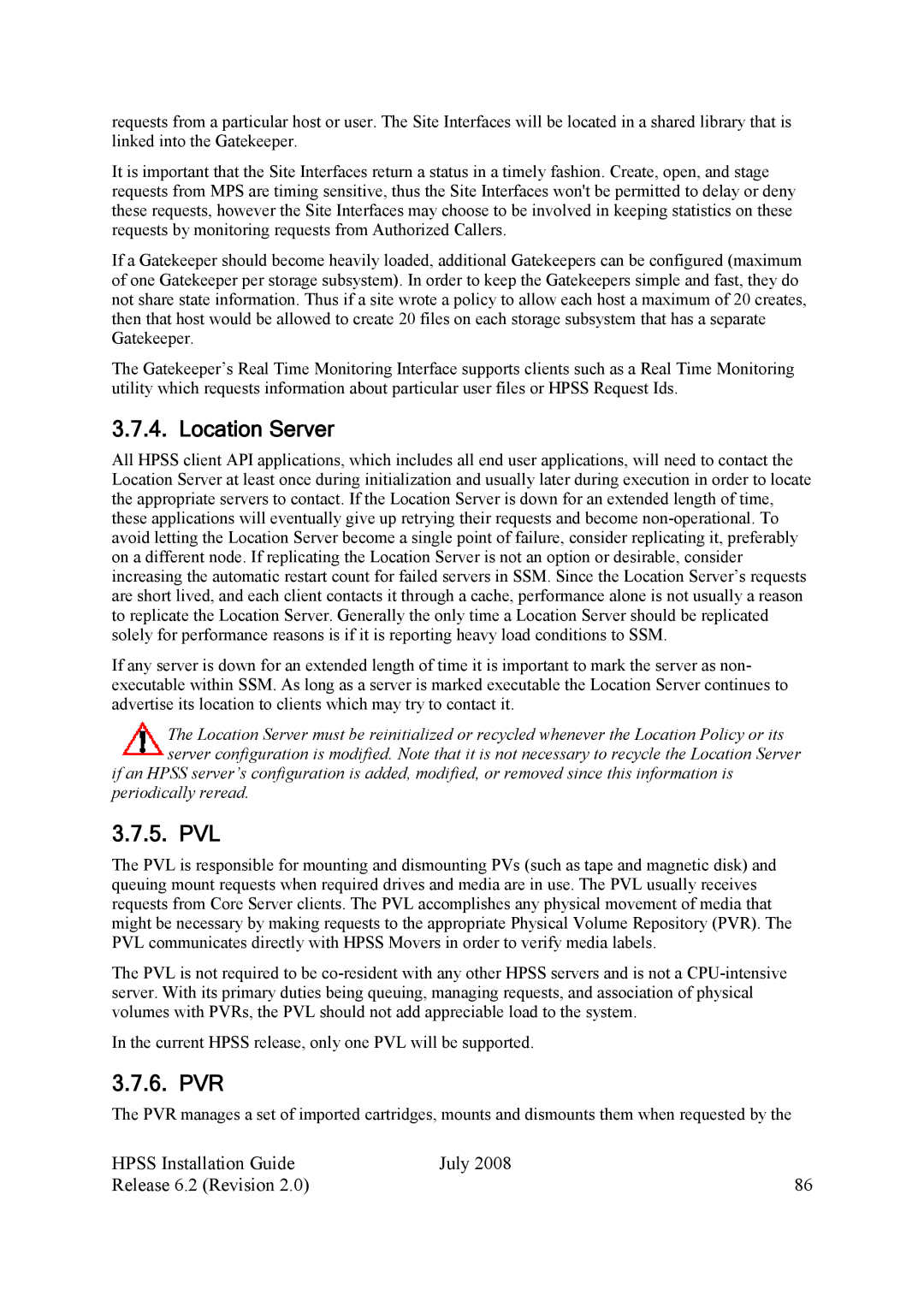requests from a particular host or user. The Site Interfaces will be located in a shared library that is linked into the Gatekeeper.
It is important that the Site Interfaces return a status in a timely fashion. Create, open, and stage requests from MPS are timing sensitive, thus the Site Interfaces won't be permitted to delay or deny these requests, however the Site Interfaces may choose to be involved in keeping statistics on these requests by monitoring requests from Authorized Callers.
If a Gatekeeper should become heavily loaded, additional Gatekeepers can be configured (maximum of one Gatekeeper per storage subsystem). In order to keep the Gatekeepers simple and fast, they do not share state information. Thus if a site wrote a policy to allow each host a maximum of 20 creates, then that host would be allowed to create 20 files on each storage subsystem that has a separate Gatekeeper.
The Gatekeeper’s Real Time Monitoring Interface supports clients such as a Real Time Monitoring utility which requests information about particular user files or HPSS Request Ids.
3.7.4. Location Server
All HPSS client API applications, which includes all end user applications, will need to contact the Location Server at least once during initialization and usually later during execution in order to locate the appropriate servers to contact. If the Location Server is down for an extended length of time, these applications will eventually give up retrying their requests and become
If any server is down for an extended length of time it is important to mark the server as non- executable within SSM. As long as a server is marked executable the Location Server continues to advertise its location to clients which may try to contact it.
The Location Server must be reinitialized or recycled whenever the Location Policy or its server configuration is modified. Note that it is not necessary to recycle the Location Server
if an HPSS server’s configuration is added, modified, or removed since this information is periodically reread.
3.7.5. PVL
The PVL is responsible for mounting and dismounting PVs (such as tape and magnetic disk) and queuing mount requests when required drives and media are in use. The PVL usually receives requests from Core Server clients. The PVL accomplishes any physical movement of media that might be necessary by making requests to the appropriate Physical Volume Repository (PVR). The PVL communicates directly with HPSS Movers in order to verify media labels.
The PVL is not required to be
In the current HPSS release, only one PVL will be supported.
3.7.6. PVR
The PVR manages a set of imported cartridges, mounts and dismounts them when requested by the
HPSS Installation Guide | July 2008 |
Release 6.2 (Revision 2.0) | 86 |
